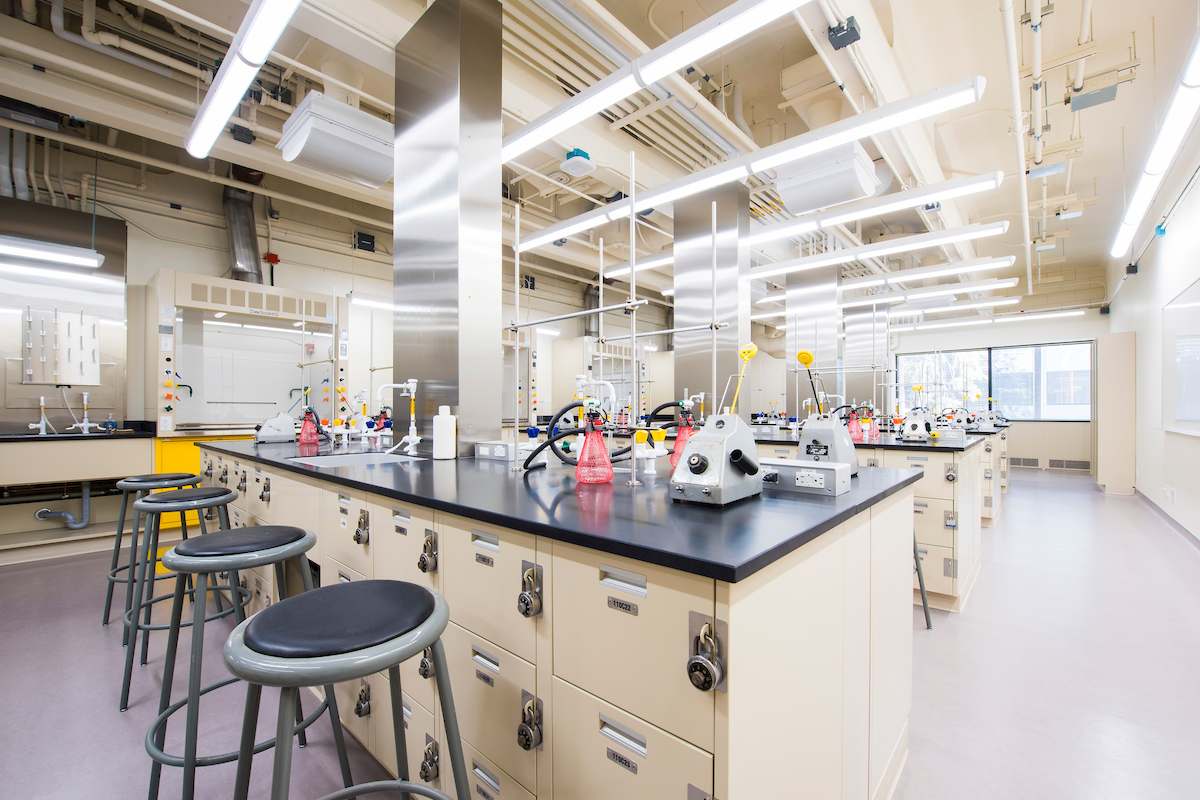
The The Faculty of Science has the highest number of instruction hours for our undergraduates of any university in Canada-including many in our undergraduate chemistry labs, a newly renovated example of which is pictured here. Photo credit: John Ulan
Undergraduate students in the Department of Chemistry have helped develop a new experiment for in-class labs-and the published details are being made accessible to other students and educators around the world.
"This is one the of the things that I find most exciting in my job as a lab coordinator-developing new and interesting experiments for my students to do, watching them learn and then sharing the results with other educators," said Jason Cooke, inorganic chemistry laboratory coordinator and project lead.
Cooke initially developed the experiment for students in the CHEM 243 course, introducing incremental improvements to the experiment over several years. He later discovered an additional useful tie-in for CHEM 299 (Research Opportunity Program in Chemistry).
Three undergraduate students enrolled in the course, Chun Yan Xie, Simran Gulati, and Minh Tang Duc Hoang, tested the experiment and discovered the final few important refinements before looking at possible extensions as original research for their CHEM 299 projects. The next term, undergraduate students in CHEM 243 carried out the final version of the experiment.
Hands-on learning
"This was my first research lab experience and was quite insightful," said Gulati, an undergraduate chemistry student who assisted with the research. "I got the opportunity to apply the scientific method that I had been learning about in theory since Grade 9. My curiosity drove my experiments. My results were more often than not unlike what I expected but that only fed into and extended my curiosity. The most fun part was letting out my creativity to find all the possible explanations for my results, which sometimes ended up being plausible and true!"
The experiment involves the Suzuki-Miyaura reaction to create carbon-carbon bonds using an organonickel compound as a catalyst, a topic of interest amongst researchers in the fields of organometallic and synthetic organic chemistry.
"There are a few relevant applications for this class of reaction, including in the pharmaceutical industry," explained Cooke. "Students are energized by doing experiments that apply to the world around them, and it is exciting to show students that the work we are doing is relevant in the modern world."
"The experiment is very flexible and can be adapted to a wide range of situations," added Cooke. "Other educators in different programs with different scheduling requirements can hopefully use this experiment in their curricula as well."
The Faculty of Science has the highest number of instruction hours for our undergraduates of any university in Canada. Experiential training in laboratories is crucial to keeping students' skills competitive in the global marketplace, and the learning environment is critical for student development and education.
The paper, "Syntheses of Four-Coordinate Nickel(II)-Phosphine Compounds and a Rapid Suzuki-Miyaura Cross-Coupling Reaction for Short Laboratory Sessions," was published in the Journal of Chemical Education(doi: 10.1021/acs.jchemed.8b00945).